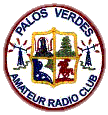



Communications is key to the success of disaster mitigation, response and recovery. With the introduction of new technology, the reliability of the type of service to communicate can no longer be considered an afterthought as the technology selected will impact the response and recovery from a major disaster or catastrophe. |
| Here is what you can expect when using the phone after a disaster and some guidelines: |
1. Who are you calling and, why? Ask yourself if this call can wait. Lines within the disaster area should be kept as free as possible for immediate emergency traffic. Think carefully before placing a call, especially to 911 if you only are asking for status information. ("Did we just have an earthquake?" "Am I supposed to do something?" etc). |
2. Ensure all handsets are placed back on their cradles or hook switches. Switching centers are designed for only 10% off-hook at a time. Overload occurs above 10% and dial tones will be delayed. Immediately after the disaster, check all the phones around you to be sure handsets have not fallen off their cradles. |
3. There is no dial tone. No dial tone (a "dead" phone) indicates an overload condition. Ensure step 2) above has been met, then just wait patiently for a tone. You will likely receive one within a few seconds. (The Loma Prieta earthquake in San Francisco averaged 15 seconds delay for a tone. Worst case was 45 seconds). During this waiting period, DO NOT tap the hook switch. It will only return you to the end of the queue and will start your waiting period all over again. |
4. But I really have to make a call. If you must make a call and cannot get a dial tone, check the nearest public pay phone, the type in public places accessible 24/7 -- perhaps at a nearby gas station or shopping center. These phones are high priority and will be returned to service as quickly as possible. You might keep a few quarters handy for just such calls. (Pay phones are currently running 35 to 50 cents per call). In some cases, however, public pay phones may not accept incoming calls to thwart drug dealers. Outgoing calls, however, should still be possible. |
5. Can my out-of-area friends call me? Most likely not, at least not for a few hours. To keep lines free in the disaster area, your area code may be blocked to incoming calls. Outgoing calls from within blocked areas will be possible, but not incoming calls. It would be best to establish an out-of-state friend or relative as an information collection point as part of your emergency preparedness planning. Your status could then be reported to this point for dissemination to other friends and relatives. That will free your responsibility, your telephone and the switching centers serving your area. |
6. Cell phones will work because they are really radios, aren't they? Unfortunately, low-power cell phones can only transmit to the nearest "node". From that point on they are in the regular land line system and are thus as limited as regular wired phones. |
7. But what if the telephones are really dead? Telephone companies have long realized the importance of their service in a disaster. Switching centers have re-mounted circuit board racks to roll with a quake, thus minimizing boards being shaken loose from their connectors. It is always best, however, to have an alternate plan in mind. Ask your City Emergency Preparedness Committee what communications are available. Radio and television stations may offer periodic public service announcements. Cox Cable, Verizon and the RPV channel will broadcast status and guidance information to its cable subscribers.
|
| Click Here to Return to Table of Contents |